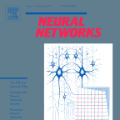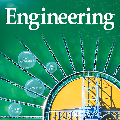Background: The construction, evolution and usage of complex artificial intelligence (AI) models demand expensive computational resources. While currently available high-performance computing environments support well this complexity, the deployment of AI models in mobile devices, which is an increasing trend, is challenging. Mobile applications consist of environments with low computational resources and hence imply limitations in the design decisions during the AI-enabled software engineering lifecycle that balance the trade-off between the accuracy and the complexity of the mobile applications. Objective: Our objective is to systematically assess the trade-off between accuracy and complexity when deploying complex AI models (e.g. neural networks) to mobile devices, which have an implicit resource limitation. We aim to cover (i) the impact of the design decisions on the achievement of high-accuracy and low resource-consumption implementations; and (ii) the validation of profiling tools for systematically promoting greener AI. Method: This confirmatory registered report consists of a plan to conduct an empirical study to quantify the implications of the design decisions on AI-enabled applications performance and to report experiences of the end-to-end AI-enabled software engineering lifecycle. Concretely, we will implement both image-based and language-based neural networks in mobile applications to solve multiple image classification and text classification problems on different benchmark datasets. Overall, we plan to model the accuracy and complexity of AI-enabled applications in operation with respect to their design decisions and will provide tools for allowing practitioners to gain consciousness of the quantitative relationship between the design decisions and the green characteristics of study.
翻译:复杂的人工智能(AI)模型的构建、演变和使用需要昂贵的计算资源。虽然目前现有的高性能计算环境支持了这一复杂性,但在移动设备中部署AI模型是一个日益增长的趋势,具有挑战性。移动应用程序包括计算资源较少的环境,因此意味着在AI支持的软件工程生命周期中设计决定方面的限制,平衡了对移动应用程序准确性和复杂性的权衡。 目标:我们的目标是在使用复杂的AI模型(例如神经网络)到具有隐含资源限制的移动设备时,系统评估准确性和复杂性之间的权衡。我们的目标是:(一) 设计决定对实现高准确性和低资源消耗执行的影响;以及(二) 在AI支持的软件生命周期中,验证用于系统推广绿色的软件工程设计生命周期的设计工具。方法:经证实的报告包括一项进行实证研究的计划,以量化设计决定对AI支持的应用绩效的影响,并报告由最终到最终实现的AI软件工程生命周期的经验。我们的目标是:(一) 设计决定对于实现高准确性和低资源消耗度执行率环境模型的影响;以及(二) 在基于图像和语言的应用程序中,我们将在基于图像和基于图像和语言的分类的应用中,对基于图像的系统的应用中,为我们提供基于图像和基于图像和基于数据定义的标准化的系统决定的标准化的标准化的标准化的标准化的计算,提供。





